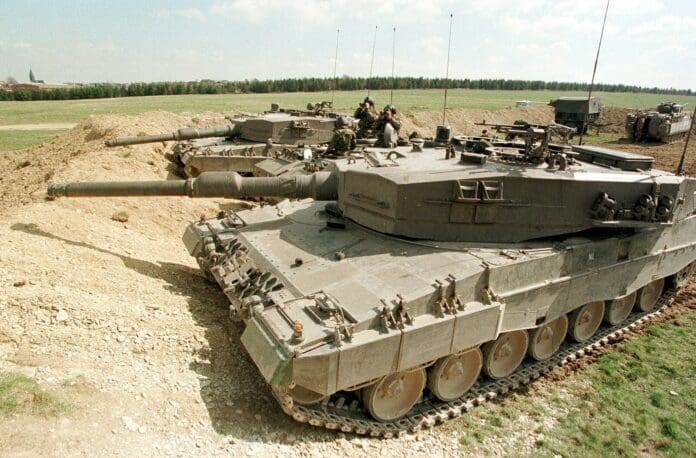This post is also available in:
 עברית (Hebrew)
עברית (Hebrew)
In a strategic move to bolster defenses against FPV (first-person view) drones, Ukrainian Leopard tanks are now being fitted with steel grid screens, part of the “Steel Front” initiative led by Ukrainian billionaire Rinat Akhmetov. These protective screens are being produced at classified facilities by Metinvest and are provided to the Ukrainian armed forces at no cost.
According to a press release from the Steel Front initiative, these screens are designed to safeguard military equipment without compromising its maneuverability or combat effectiveness.
FPV drones have emerged as a significant threat in the ongoing Russia-Ukraine conflict. Equipped with explosives, these kamikaze drones exploit vulnerabilities in military vehicles, posing a serious challenge to both Ukrainian and Russian forces. In response, both sides have explored various protective measures; however, Russia’s use of heavy metal plates, known as “sheds,” often sacrifices mobility for defense.
Recognizing the need for effective yet agile protection, Metinvest developed the steel grid screens, which function like nets to capture incoming drones and prevent them from striking the vehicle’s hull.
Each steel screen weighs approximately 430 kg, a manageable addition considering the overall weight of a Leopard tank. The cost of manufacturing each screen is around $20,000, which is merely 0.3% of the tank’s total value of about $6 million, making it a cost-effective solution.
The installation process is efficient, with a team of 10-12 people taking about 12 hours to fit a single screen at repair bases before the vehicles are dispatched to the frontlines. This innovative protection strategy is already being implemented on various military platforms, including Soviet T-72 tanks, Ukrainian T-64s, American M1 Abrams, and Bradley Infantry Fighting Vehicles (IFVs).
As both armies continue to grapple with the evolving threats posed by drone warfare, initiatives like the Steel Front are crucial in enhancing the safety and operational capabilities of military vehicles on the battlefield.


























